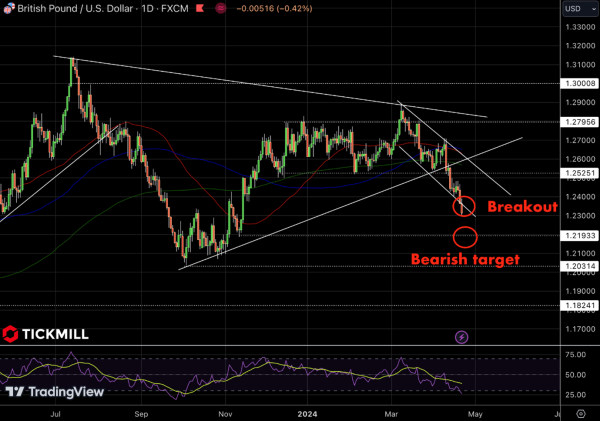Dollar Steady Amidst Geopolitical Calm, Eyes on US Data and Central Banks
In the wake of a relatively tranquil weekend marked by the absence of further escalations between Iran and Israel, the US Dollar has maintained its steady stance on Monday. Investors are breathing a collective sigh of relief as the absence of fresh geopolitical tensions fuels a risk-on sentiment, bolstering equities and potentially providing the Greenback with some breathing room for further easing.
As markets brace themselves for the upcoming economic data releases, today's calendar appears thinly populated. All eyes are eagerly fixed on Thursday's unveiling of US GDP figures, followed by Friday's release of the US Core PCE data. The latter, being the Federal Reserve's preferred measure of inflation, assumes paramount importance this week. Another robust PCE reading could prompt market participants to factor in the possibility of a rate hike, diverging from previous expectations of monetary easing.
In the currency markets, the EURUSD pair continues to be weighed down by bearish sentiment, largely attributable to the differing interest rate outlooks between the US and Europe. With expectations leaning towards a protracted period of elevated interest rates in the US, capital flows favor the Greenback, bolstering demand for interest-bearing US assets. Additionally, anticipation builds following reports over the weekend hinting at a potential interest rate cut by the ECB during its upcoming June 6 meeting.
On the technical side, EURUSD saw renewed pressure over the lower bound of its key medium-term bearish corridor after an unsuccessful previous breakout, which can be viewed as a signal of an impending bearish breakout and a leg lower:

In the realm of commodities, both Oil and Gas futures are witnessing a decline as tensions in the Middle East gradually ease, alleviating concerns over supply disruptions.
Equity markets are basking in the positive sentiment cascading from Asian counterparts, with both European and US indices flashing green ahead of the eagerly awaited Big Tech Earnings scheduled for this week.
However, the Pound Sterling finds itself on the back foot during Monday's early American session as investors brace for a possible pivot towards interest rate cuts by the BoE, outpacing similar moves by the Federal Reserve. GBPUSD suffered from a downside breakout towards the 1.23 level as Bank of England Deputy Governor Dave Ramsden underscored receding upside risks to inflation, prompting markets to speculate about an early rate cut:

Moreover, weakened Retail Sales data for March, as revealed by the Office for National Statistics (ONS), amplifies concerns over a deepening cost-of-living crisis fueled by the central bank's hawkish stance. March's stagnant Retail Sales figures, falling short of economists' expectations, coupled with lackluster February performance, underscore the challenges posed by higher interest rates on consumer spending.